The Canon 1.2/85 is a legend of a lens and in this review I put it’s earliest incarnation to the test on my Sony a7II.
Specifications
| Diameter | 81 mm |
| Length | 72 mm |
| Filter Thread | 72 mm |
| Weight | 756 g |
| Max. Magnification | 0.1 |
| Close Focusing Distance from the sensor | 1 m |
| Number of aperture blades | 9 |
| Elements/ Groups | 8/6, floating elements |
In Germany you can buy it used for around 650€ at ebay.de (affiliate link).
Image Samples
Versions
- The Canon FD 85mm 1:1.2 S.S.C. ASPHERICAL was released in 1976 and features 9 aperture blades.
- It’s successor was the Canon FD 85mm 1:1.2 L which has only 8 aperture blades but as far as I know the optical design remained the same.
- The Canon EF 85mm 1:1.2 USM L is a new optical design not significantly sharper than the 40 years old design but I can’t say how bokeh and other characteristics compare. The EF version is a lot heavier at 1kg. It comes in two versions, the main difference seems to be that the II version focuses significantly faster.
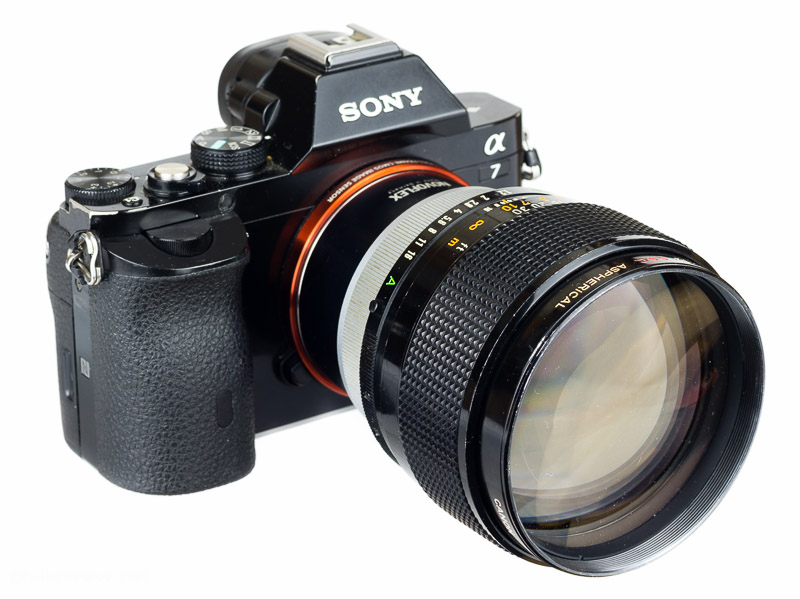
Build quality and handling
The Canon’s build quality is on a very high level as you would expect from a top-of-the-line lens introduced 40 years ago. The lens is made from metal, glass and some rubber (which has aged very well). Everything moves smoothly without play and all the markings are engraved.
Focusing Ring
When I bought this copy it had a rather stiff focusing ring so I sent it to OM-lab CLA it and now the focusing ring offers just the right amount of resistance for my taste.
The focusing ring travels around 180 degrees from 1m to infinity which is a great transmission, the focusing is precise at any distance without being too indirect.
The focusing ring has a large diameter which makes it less pleasant to grip it with my average sized hands but all in all focusing is still a pleasant experience.
Aperture
The aperture ring has half stops from f/1.2 to f/16 and those have a very distinctive click. I still occasionally mistake the mounting ring for the aperture ring and wish it was a bit smaller in diameter and more different from mounting ring.
The Canon FD 1.2/85 ASPH has nine slightly rounded aperture blades.
Hood
I don’t own the original hood, instead I use a Nikon HN-20 which protects the front of the lens well enough from damage and stray light.
Size and Weight
At 765g and with a rather high diameter the Canon isn’t as pleasant to handle on the Sony a7II as other lenses which are better balanced and easier to grip. If I want to fit it into my smaller camera bag I can can only fit one other lens into it where I usually pack three lenses. This made me often hesitate to pick the Canon and I much more often chose the Olympus OM 2/100 over it.
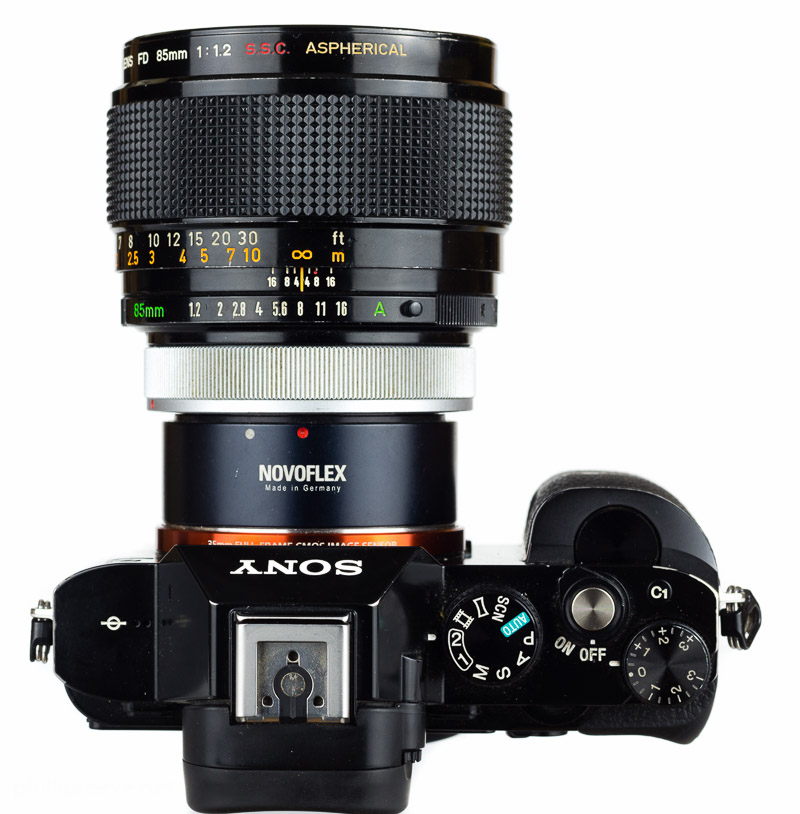
Optical performance
These results are based on the use with a Sony Alpha 7/7II.
Flare Resistance
As is to be expected from a 40-years-old lens the with such an enormous front-lens the Canon is quite susceptible to flare.
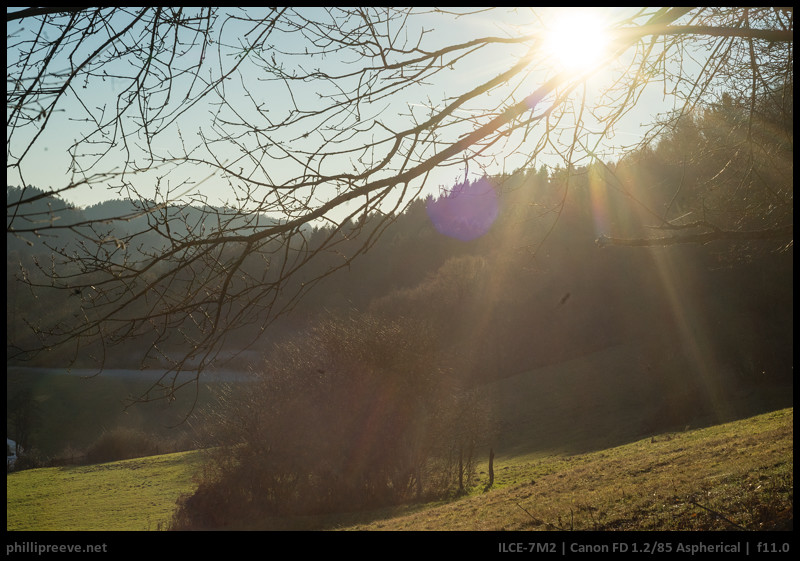
When you keep the sun outside of the image veiling flare is better controlled than I would have expected and in my practical use I had little issues with it.
Bokeh
Bokeh is of course a very important aspect of this lens so I will devote some space to it.
At f/1.2 and in very demanding situations bokeh can be a bit harsh, especially in the transition zone as you see in the image below.
Usually though most of your image will be so out of focus that the background is quite smooth.
Stopped down to f/1.6 Bokeh becomes a little smoother.
Usually though you have a very blurred background because of the fast aperture which is more important for a smooth background than the bokeh itself which is decent but not great.
Not unexpectedly bokeh at longer distances isn’t as smooth as at shorter ones but still pleasant enough. 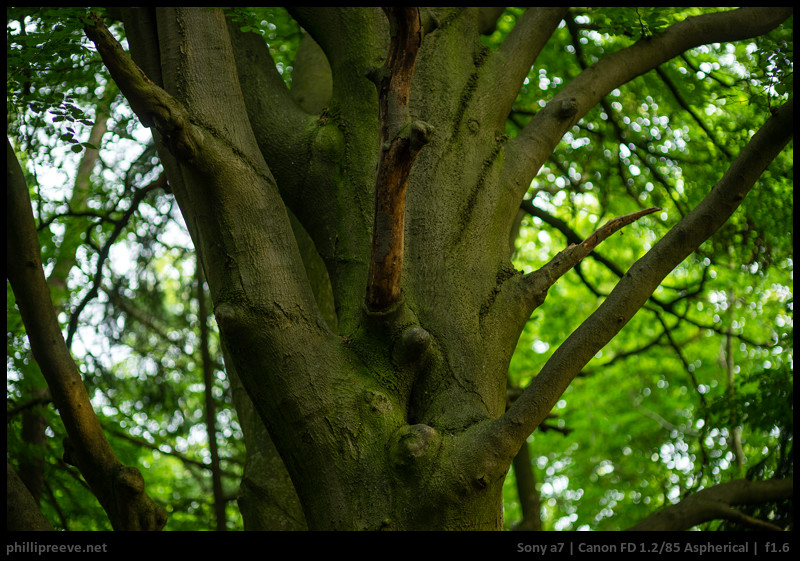
The Canon 85mm 1:1.2 Aspherical can show onion-like structures in oof highlights because of the aspherical element.
Thanks to the 9 aperture blades out-of-focus highlights stay more or less round even if you stop down.
Chromatic Aberrations
So far I have only tested one portrait lens which didn’t suffer from axial CA and the Canon is no exception in this aspect.

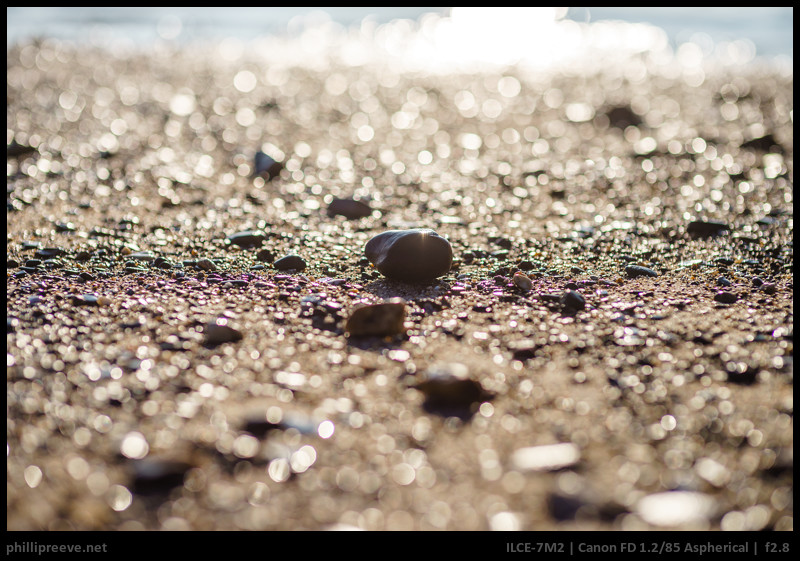
Vignetting
Vignetting at f/1.2 is quite noticeable but not as bad as that I ever felt the need to correct it. At f/2 vignetting is already very low and from f/2.8 an absolute no-issue.
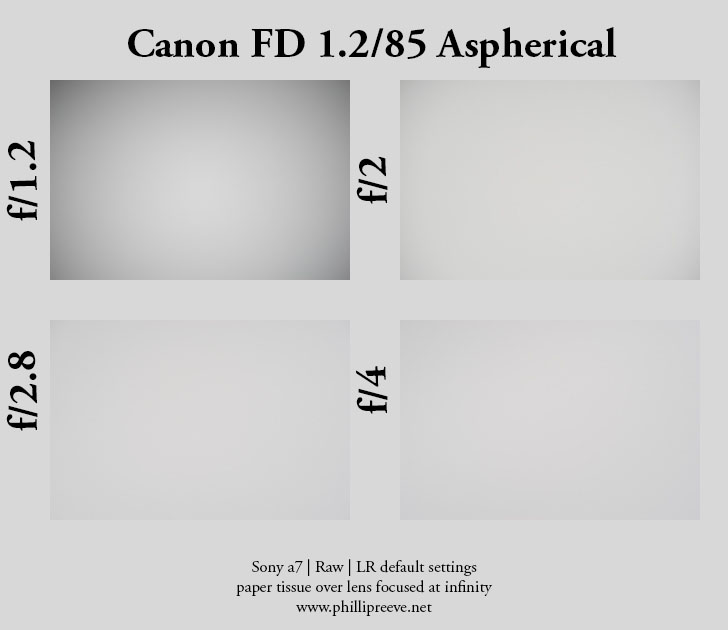
Distortion
A small amount of pincushion distortion.
Sharpness

f/1.2: Decent resolution but lower contrast in the center, outside of the center the image is soft.
f/2: The center is improved a lot but off-center sharpness still isn’t that good.
f/2.8: The center is excellent now with and the Canon is sharp off center as well. Corners are usable.
f/4-5.6: Some improvement off-center and in the corners
f/8: Excellent to very good across the frame.
f/11: Diffraction reduces image quality to very good levels, the corners gain a little though.
If you take into regard the Canon’s age its performance is absolutely stunning. At f/1.2 it is far from perfect but still better than any classic 1.4/50 at f/1.4. For portraits in softer light I don’t hesitate to use this aperture and I got some really nice portraits out of it. If you need a sharp image with high contrast just stop down one click to f/1.6 and performance improves a lot to high levels. You shouldn’t move your subject too far off center though. For best across the frame sharpness stop down to f/8 where the Canon will give you very good results.
Applications
The Canon FD 1.2/85 works very well as a portrait lens.
For tighter framed images at f/1.2 you get that special super thin DOF look which works very well for some subjects.
The Canon 1.2/85 also works great for isolating a subject from it’s surroundings at medium distances but you should choose a rather unstructured, evenly lit background or you can get quite nervous bokeh at these longer distances and nasty CA. You should also makes sure to place your subject not too far off center because the Canon is significantly less sharp off-center.
Because of the size alone I wouldn’t take the Canon on a hiking trip even though the Canon works well enough as a landscape lens with very satisfying across the frame sharpness at f/8. Not as well as say a Zeiss Loxia 2.4/85 though which is lighter, smaller with more contrast, more effective coatings and excellent across the frame sharpness from f/2.4. A lighter and cheaper alternative would be the Zeiss C/Y 2.8/85.
For nature details the Canon works well because of it’s ability to isolate them from the chaos of nature but the rather long short focusing distance of 1m is a bit limiting as is the average bokeh in the transition zone.
Alternatives
- Sony GM 1.4/85: The modern Sony bests the Canon in any but two aspects: It is very sharp across the frame from f/1.4 with significantly less CA, smoother bokeh and of course AF. It isn’t as fast though and it costs a huge amount of money.
- Olympus OM Zuiko 2/100: I won’t keep the Canon and that’s because of my Olympus. It is significantly smaller, focuses much closer, has smoother bokeh and better off-center sharpness at wider apertures. It certainly isn’t as fast but the super shallow DOF of the Canon isn’t something that I regularly need and I found myself using it at f/1.6 most of the time.
- Minolta MC 1.7/85: At f/1.7 the Minolta behaves a little like the Canon at f/1.2: Resolution is fine but contrast quite low and bokeh can be a bit nervous if you challenge it. So the Canon is a much stronger performer at this aperture. Stopped down both lenses are very good performers, the Minolta has only 6 aperture blades though. The Minolta is smaller and much cheaper.
- Tokina 2.5/90 Macro: One of my other all time favorite manual lenses. Of course it isn’t as fas so it will give you less subject isolation and the focusing ring isn’t ideal for portraits. Apart from that it has smoother bokeh, is lighter and a little sharper with less CA.
pros
|
average
|
cons
|
The Canon has enjoyed a legendary status for a long time now and I totally understand why: In it’s time it was the only super fast 1.2/85 when the competition merely had f/1.4 lenses to offer and its performance is remarkable for a 40 years old f/1.2 lens.
And how does it perform by today’s standards? Not that great but still quite good I would say. At f/1.2 you should expect some aberrations which create a vintage look some like and others don’t, but don’t expect the technical perfection of a GM 1.4/85 at f/1.4.
Stop the Canon down to just f/1.6 and it changes its character quite a bit: contrast and sharpness improve to good levels and for portraits bokeh will usually be very smooth but but you should be aware of the somewhat busy bokeh at longer distances, the not that great off-center sharpness and it’s proneness to flare and CA. Stopped down to f/2.8 general performance is excellent and by f/8 it gives very sharp results for landscape photography.
Build quality is great but the handling suffers from the large diameter and it’s heft. At the current price of a little over $600 it offers a decent value. Other 1.4/85 lenses aren’t much cheaper nor better but half a stop slower.
I don’t think there is a better classic 85mm lens than the Canon FD 85mm 1:1.2 S.S.C. Aspherical and I was generally quite pleased with the images I got out of it. None the less I found myself often hesitate to take it with me because of its size and weight. If you like to take images with very shallow depth of field though I wouldn’t hesitate recommending the lens.
The Canon FD 1.2/85 Aspherical (or the very similar L version) usually sells for around $600 used at ebay.com (affiliate link).
In Germany you can buy it used for around 650€ at ebay.de (affiliate link).
If this review was helpful to you, please consider using one of my affiliate links. Thanks ?
Images Samples in full resolution
You can find more images in this flickr set: Canon FD 1.2/85 Aspherical SSC
Other articles
- The Guide to Canon FD lenses in the digital age
- Olympus OM Zuiko 2/100
- The best lenses below $499 for the Sony a7 series
This site contains affiliate links. If you make a purchase using any of the links marked as affiliate links, I may receive a small commission at no additional cost to you. This helps support the creation of future content.
Latest posts by Phillip Reeve (see all)
- Review: Samyang AF 75/1.8 FE - April 12, 2021
- The FE-List now has 113 lenses on it - March 25, 2021
- 2020 – Year’s end review - December 28, 2020

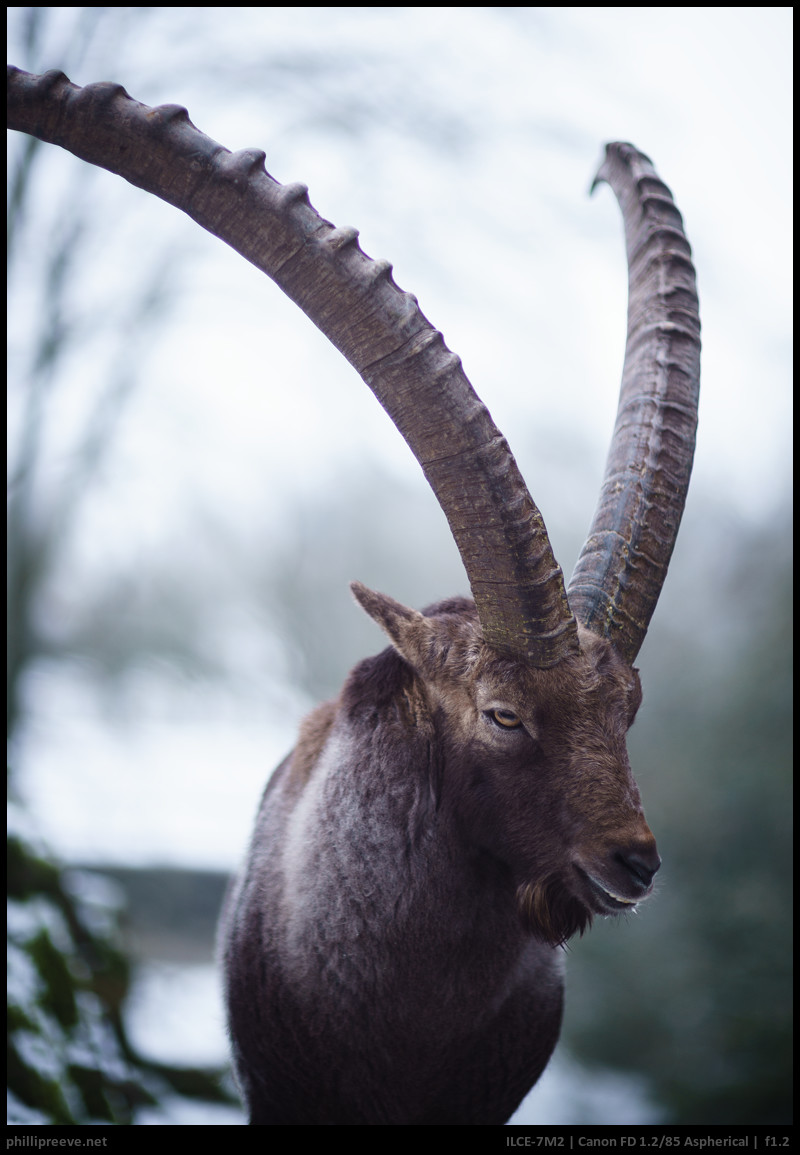
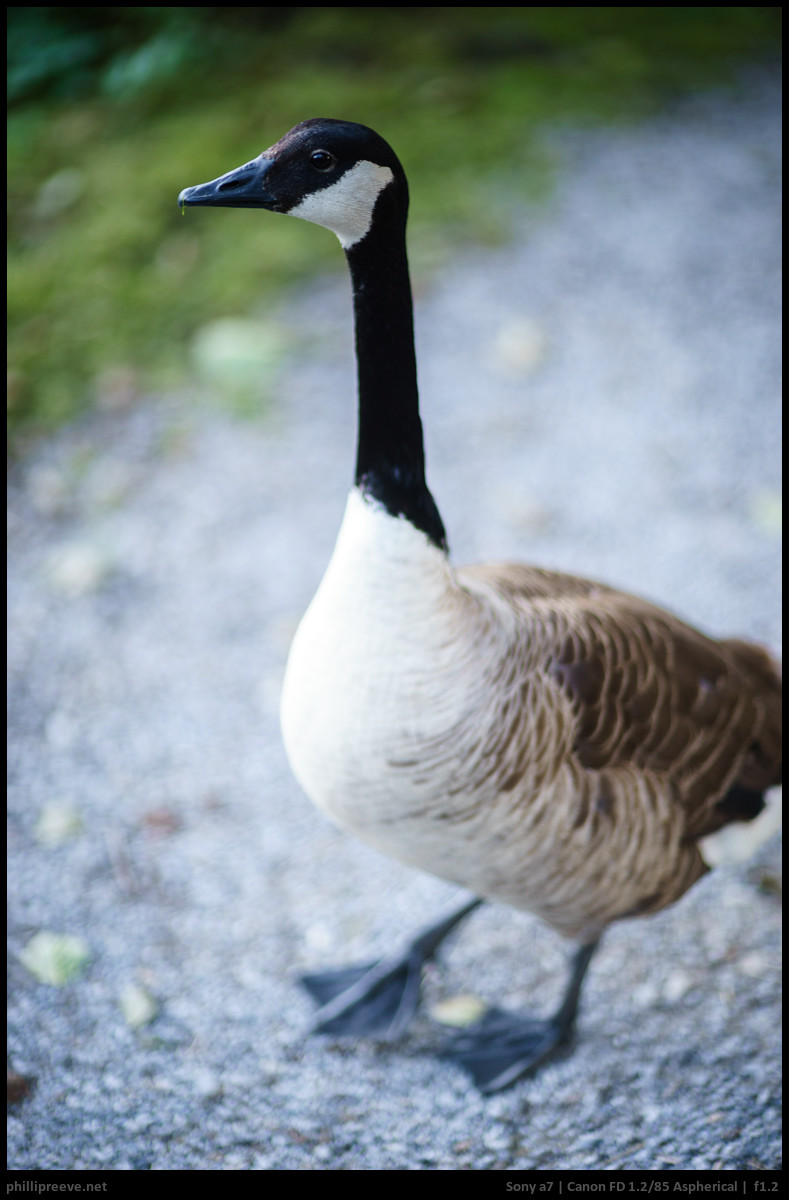
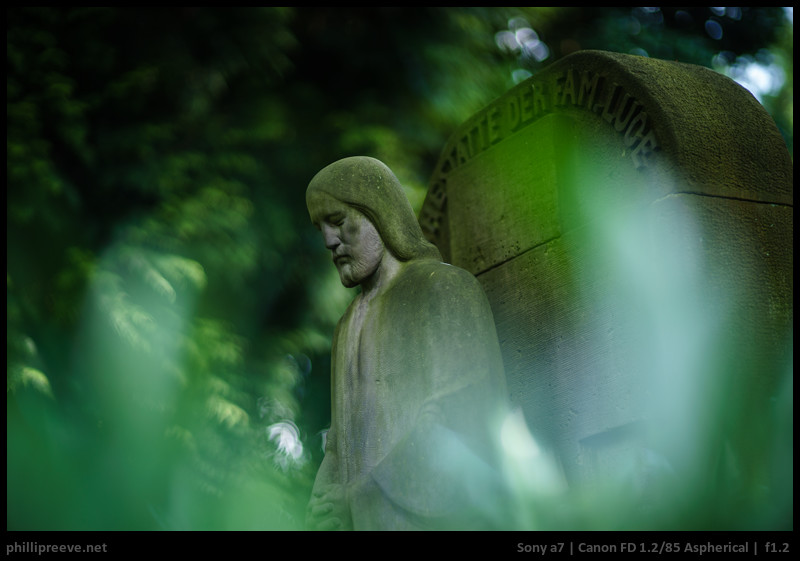
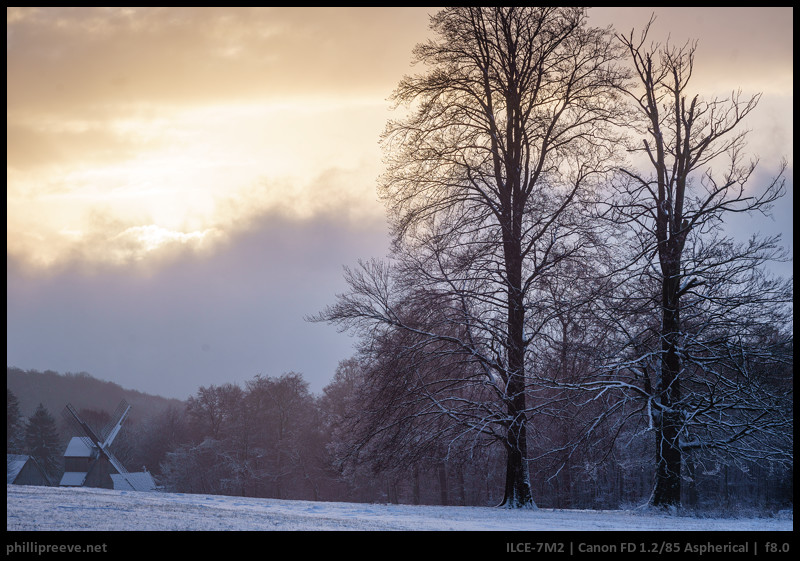
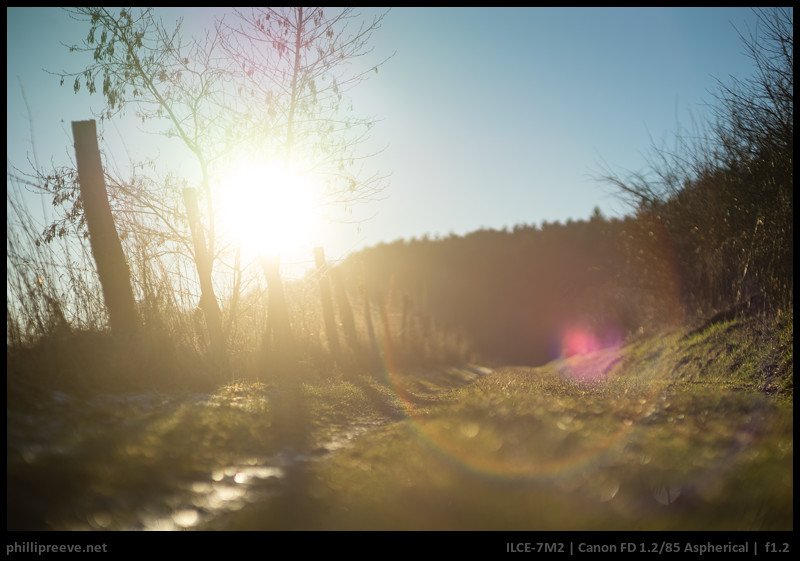
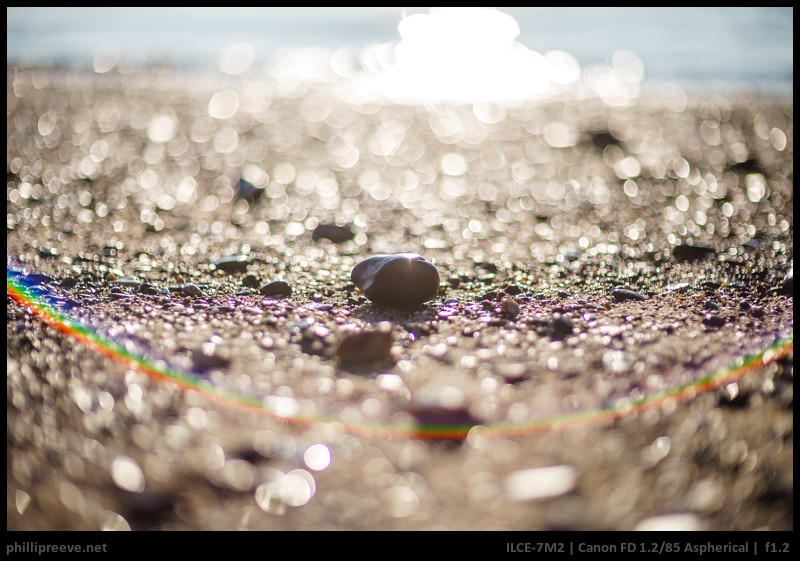
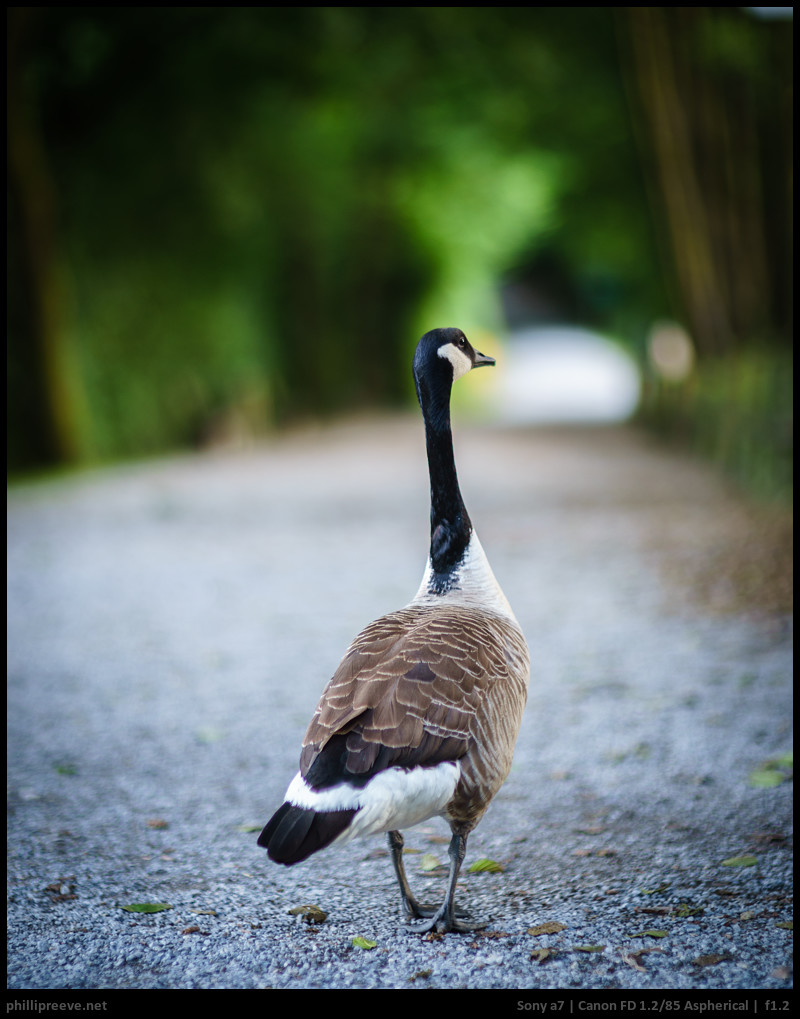
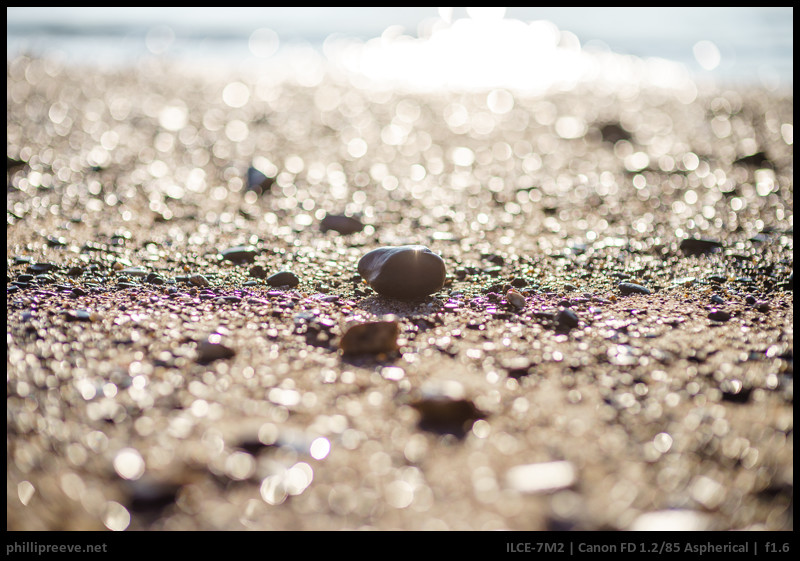
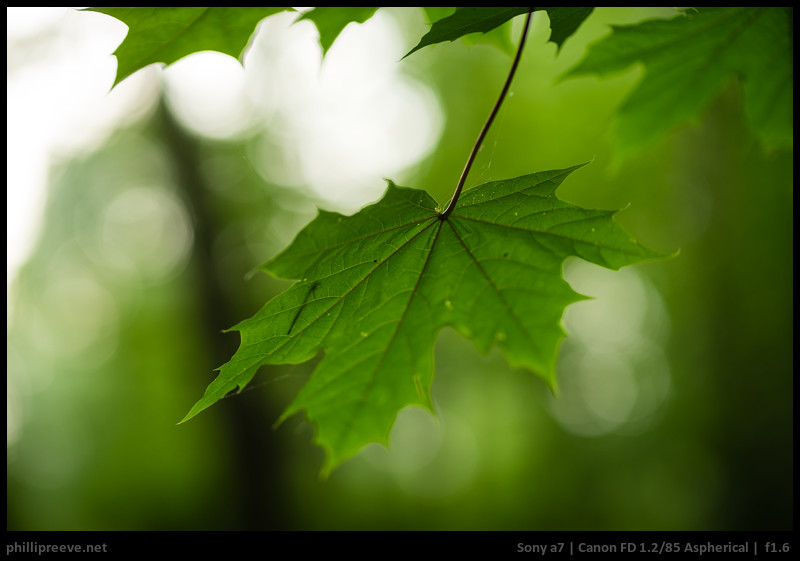
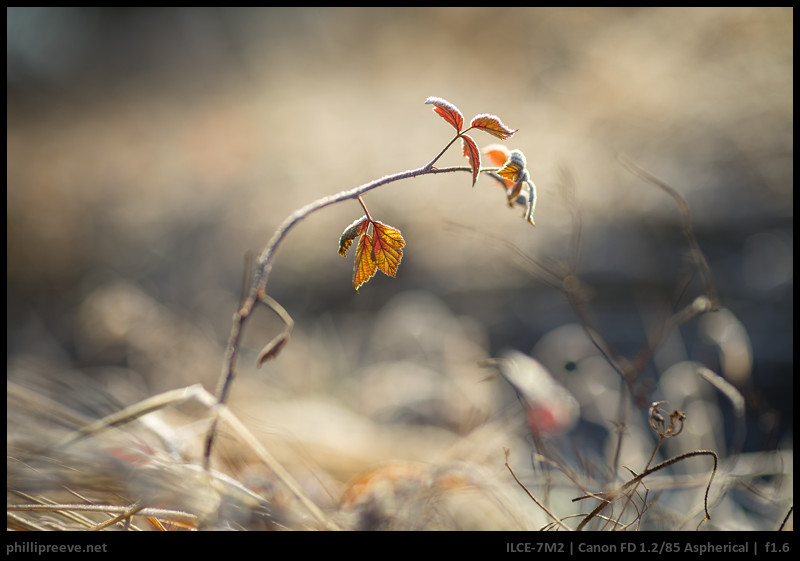
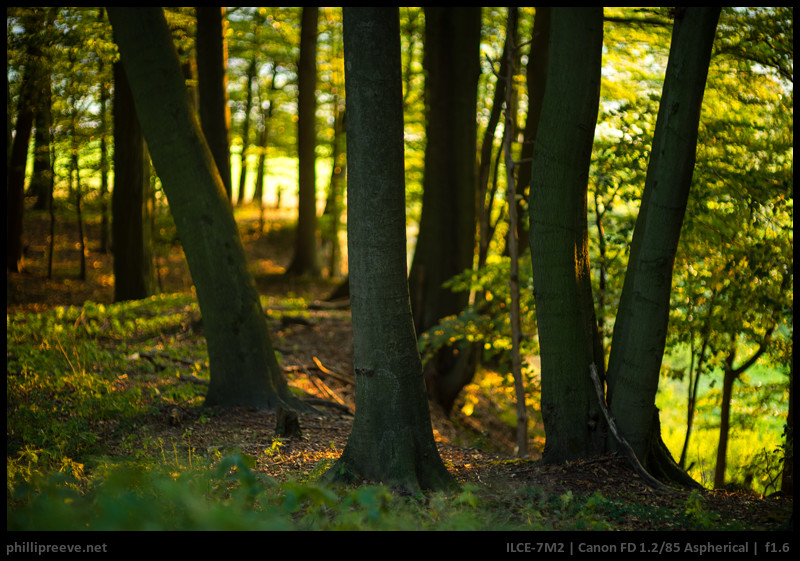
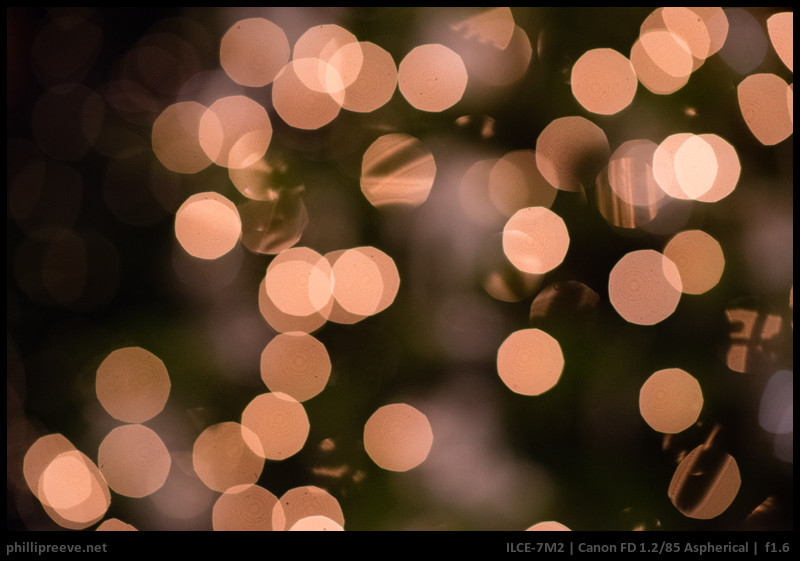
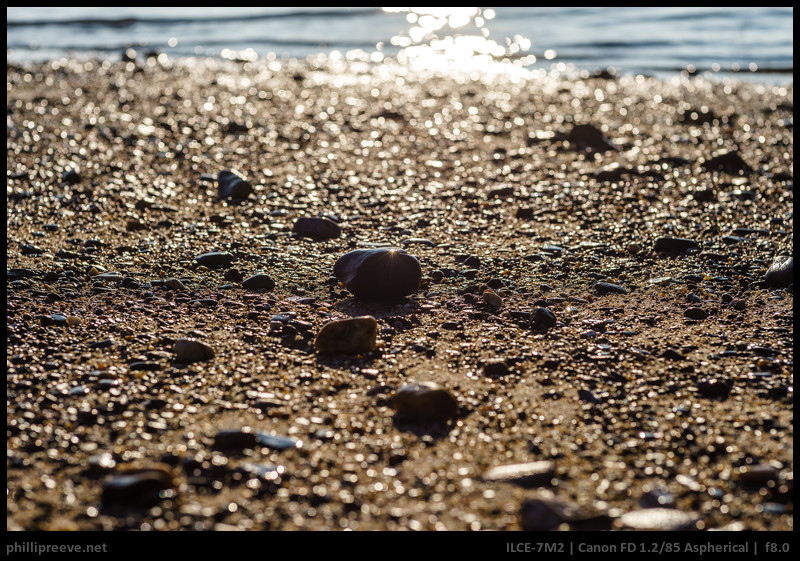

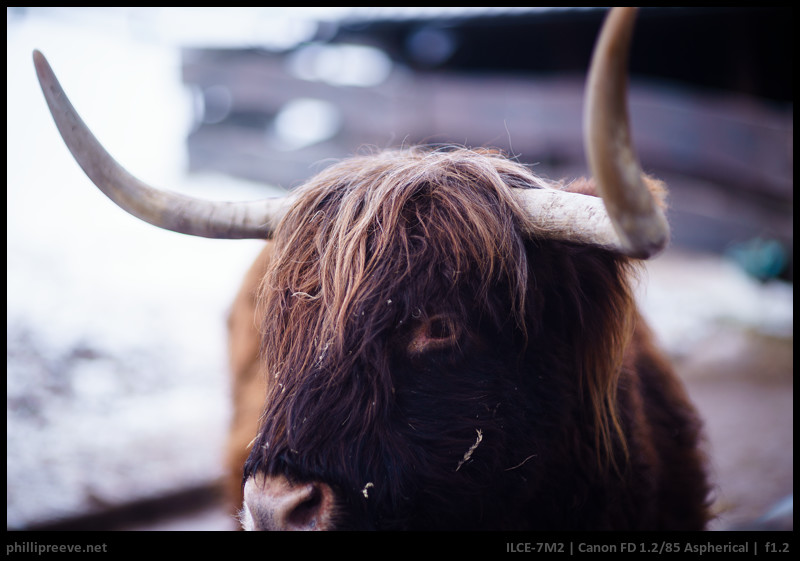
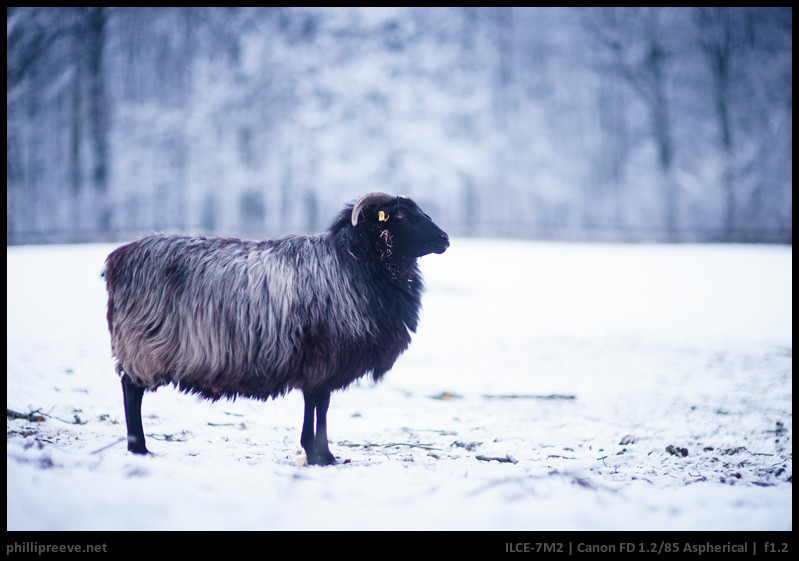
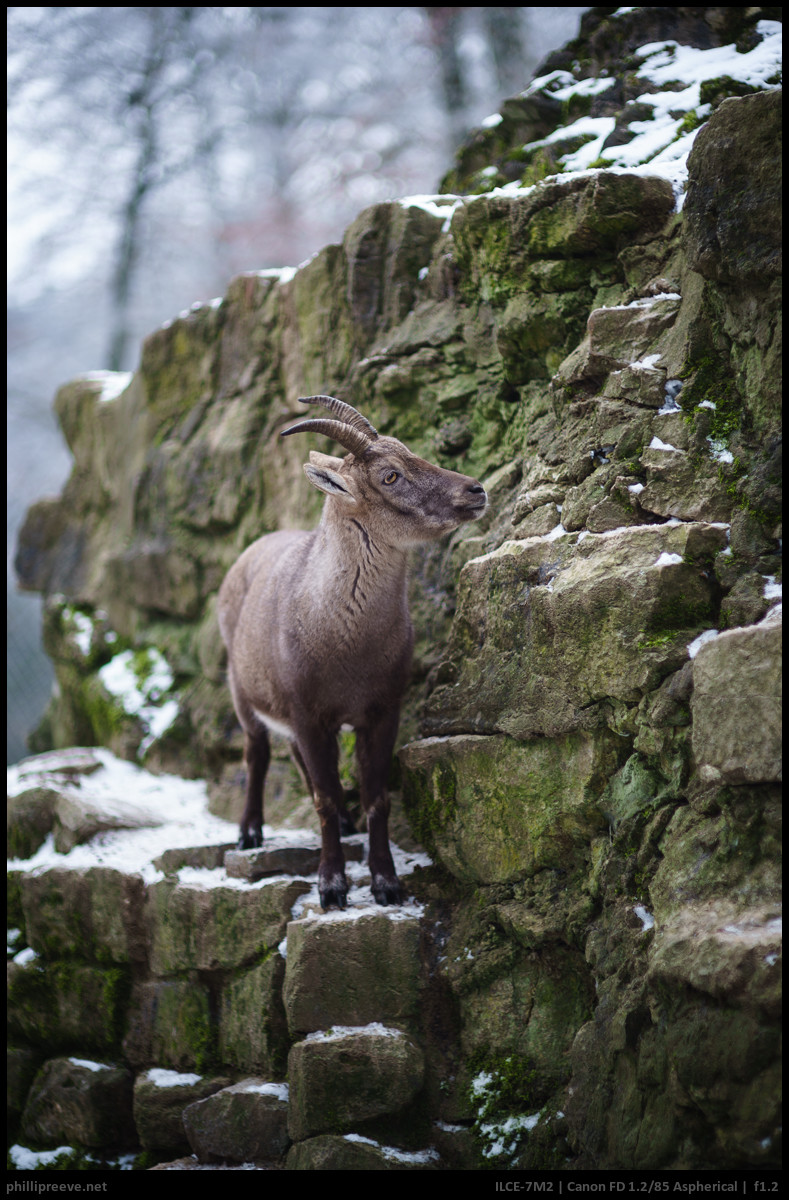
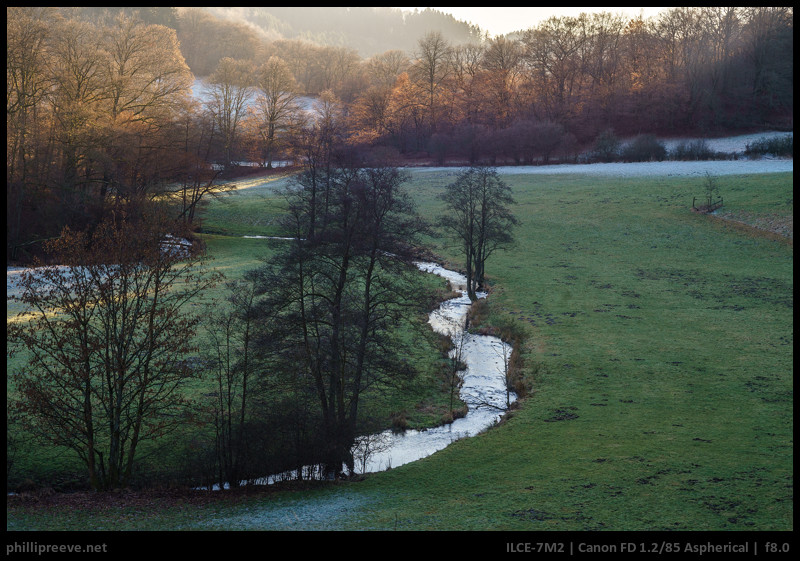
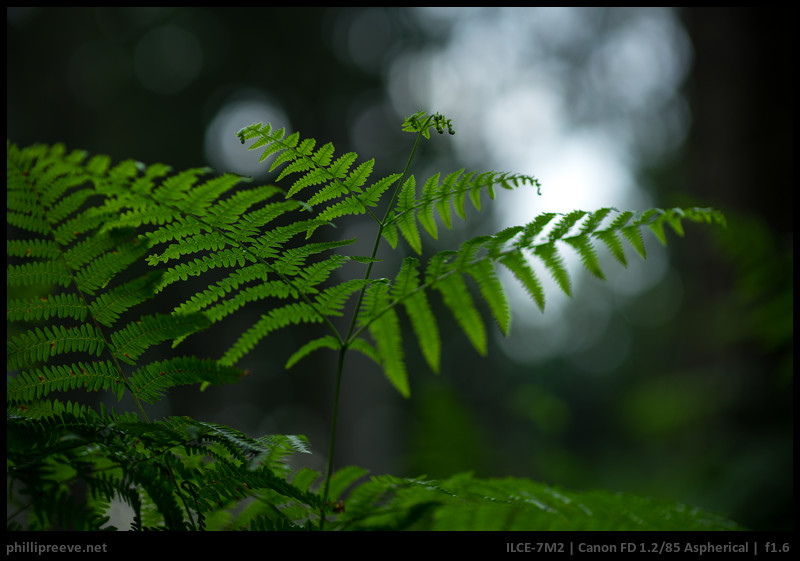
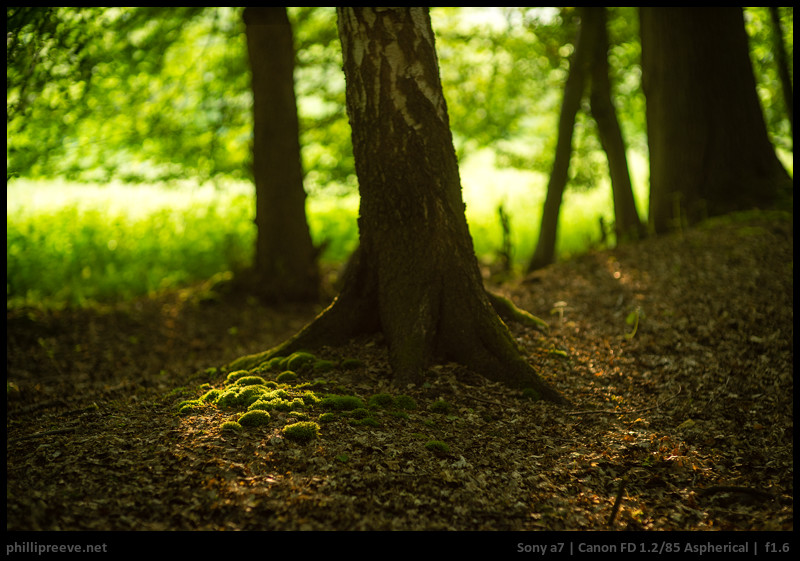

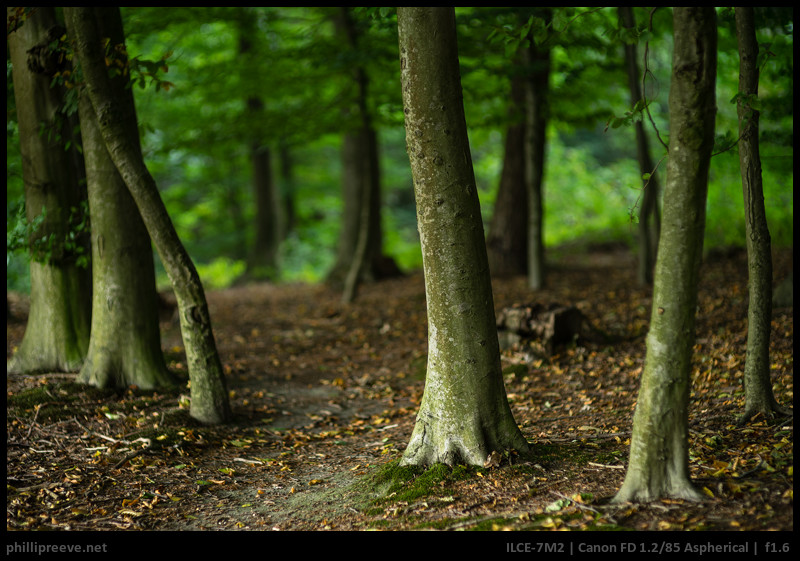
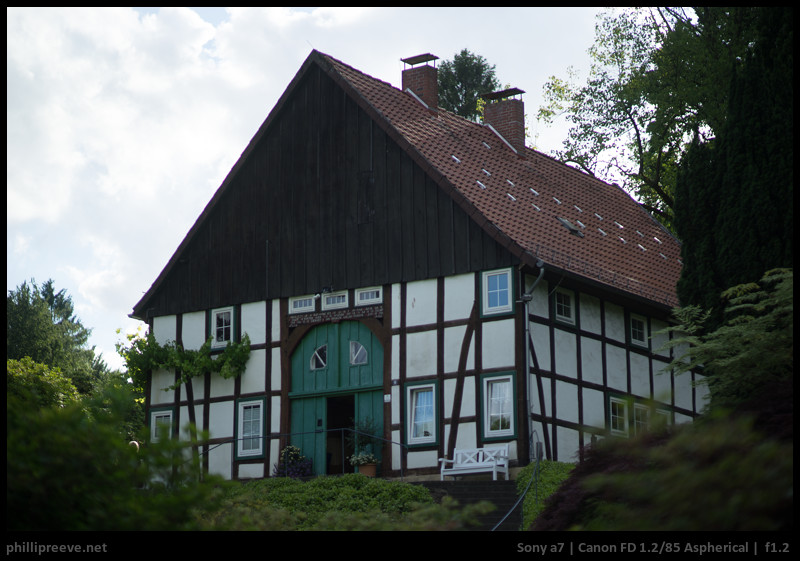
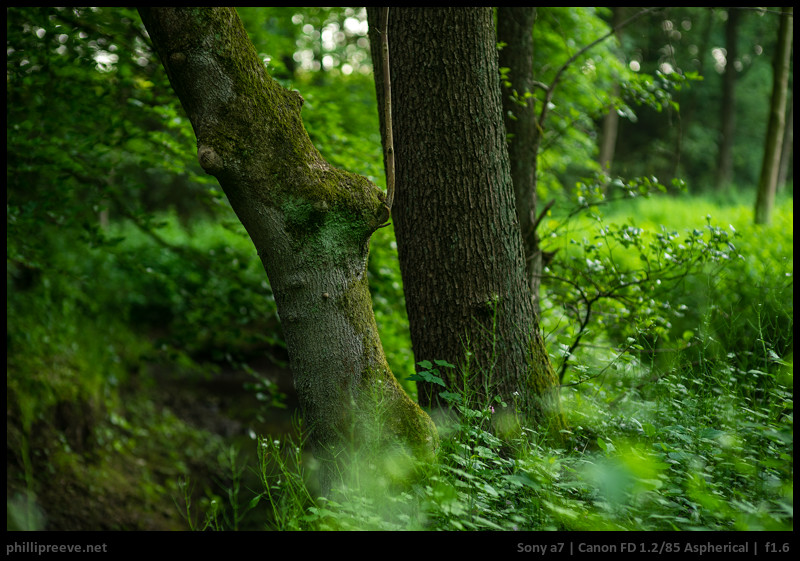
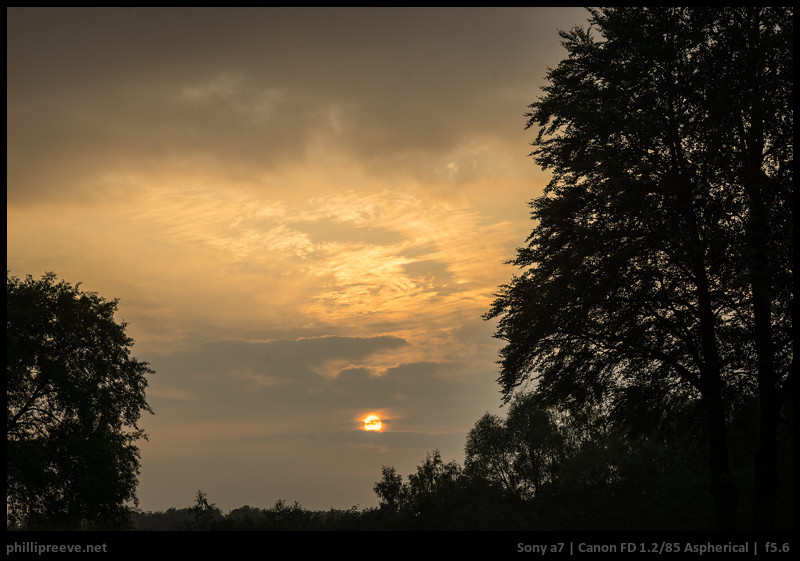
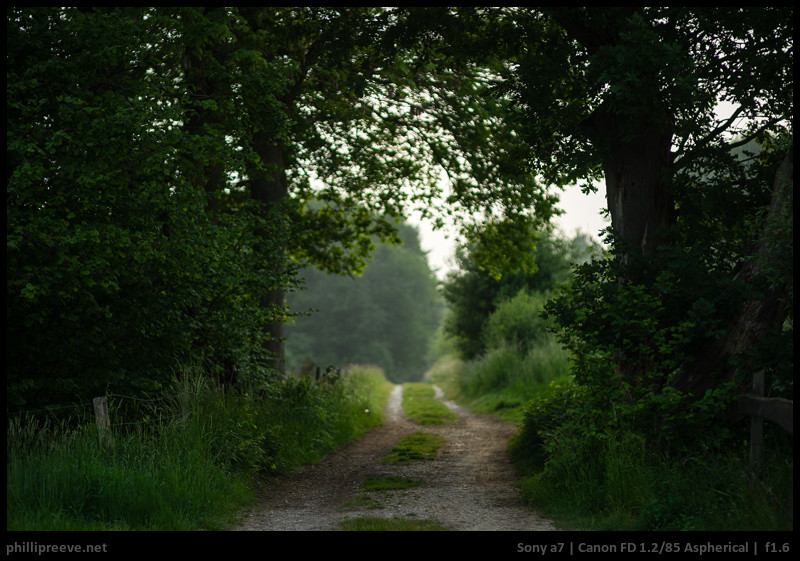
Every lens manufaturer is cooking with water only, but if money doesn’t matters, there are much more possibilities to design much better excellent glasses! But they have to be sold, and produced in certain numbers! The “red pencil” stands always next to any new product!
There are some thing that you have to know when you are going to buy this or the later FD85L. They are rear element fixed designs and it is crucial where this rear element will be. A friend of mine tested his copy of the FD85 ASPH with standart FD-sony adapter and than he modified it in order to get infinity exactly where the lens says it is infinity by moving the lens forward a little. He said that this changed the optical quality dramatically. Also keep in mind that because of the fixed rear element this lens is very sensitive to slight tilt and on the A7 with its soft mount the performance can drop down. Back in the days Canon was recommending only their top FD bodies to be used with this lens.
Also about the alternatives – the only real alternative to this lens can be another fast 85. Please get a Samyang 85 1.4 and try it ;). I have them both and for me they are both keepers.
Last but important – because Canon users during the years were constantly trying to adapt this FD851.2 to EOS there can be a lot of ruined copies. Ruined from experiments, all the lenses in the construction were factory aligned on a machine, imagine how many of the owners knew that or the people who cleaned them from fungus or other interventions… I can say only that if you find a mint copy it will outperform the EF851.2II easily.
Which gets me to another topic – it will be nice to see an article about how to take care of our vintage lenses in the near future. I am kinda shocked these days watching on youtube clips about 100 ways to clean, fix, … your lens but they are most like 100 ways to ruin your lens. Since those lenses are not in production – we are getting to a point where they will extinct due to idiotic practices of usage.
+1 for the Samyang 85 1.4. I think Phillip already knows that lens because of previous reviews.
In my opinion the samyang lens has a premium perfomance wide open and a very low cost.
And it may not have samyang 14mm problems with decentering or as many quality control issues.
Any opinion about Canon fd 85mm f1.8?
It’s cheaper, it’s a F1.8 but how it is compare with this F1.2?
I haven’t used it but I think at f/1.8 the 1.2 is much stronger
1.8 is sharper closed down, much lighter and smaller. I had them both for a while. Yet my copy of the FD85L is not in good shape(I can’t say exactly how bad it is… never tried a mint one) I prefer it because of its bokeh and overall rendition of the frame.
I used the 80mm focal length on a walk recently with my faithful Tamron Adaptall SP 80-200mm f2.8 LD on an A7ii, which weighs an awful lot and is obviously massive, but it is very sharp across the frame to my eyes – especially at 80mm where it supposedly performs on a par with the best prime lenses of that focal length.
I’d highly recommend it for landscape photography – and I have hiked with it despite the weight…
I think I would prefer my MD 4/75-150 as a landscape zomm which is a great performer at the wide end.
You ever tried the Adaptall SP 80-200mm f2.8? I think it could be worth the effort of carrying it around based on the initial images I’ve taken with it on my A7ii.
https://www.flickr.com/photos/uponnothing/albums/72157634579405456
No I haven’t. To convince me to do it you should at least make your images available in full resolution 🙂
Excellent review Phillip, as always. Much appreciated. For classic 85s, I think there is one that’s better though, you may have seen it, but others probably haven’t. I liked the FD 85 1.2 quite a bit though–owned two copies.
http://www.fredmiranda.com/forum/topic/1402791
http://www.fredmiranda.com/forum/topic/1431311
That’s quite a potato on the end of that Novoflex, Philip!
Can’t get too excited with this oldie – especially for those prices. I too would recommend the Samyang/Rokinon 85/1.4 for today’s shooter.
Sadly, the Canon fails on far too many counts – bokeh, flare, CA and your other optical discoveries. If it weren’t for your artful shooting skills to create some worthy test pix, this one wouldn’t come out of the bag with me…
Nice review! This lens is also excellent for video, compared to the fly-by-wire EF successors.
I have owned FD-N 85mm f1.2L version of this lens since I bought it new in 1990.
It is a fabulous lens for shooting portraits in wretched available light – but frankly, I like my lighter/smaller Nikon 85mm f2 AiS for its 55mm front element and the lighter weight that comes with it. In fact, since one frequently needs to stop down to f4 with such lenses to keep both eyes in focus on an oblique view, my Leica 90mm f2.8 Tele-Elmarit – with a 39mm front element – wins the portability competition easily.
Where the 85mm f1.2L shines is for indoor sports like basketball. Focused with the TechArt Pro AF adapter.
This lens is a total unicorn. By any chance if you come across one in great condition anywhere in the world can you hit me up? It is the ONLY one I’m missing from a complete collection of FD mount lenses. And I mean complete… except this one. Thanks in advance.
Will keep you in mind. Sold mind in less than great condition a while ago.
Obviously this lens is going to fall short of the new designs like the Canon RF 85 f/1.2 technically. But it is still going to have a unique character compared to modern lenses. Things like bokeh are very subjective, of course the current trend is for smoothness, but in the future it may flip due to the fact that “flawed” bokeh shows more the optical system that created it. I hope that makes sense.
Anyhow, thanks for taking the time to do a writeup.
Wow I love this lens at f1.6! (while I am not requesting this from you 😉 ) I would love to see how this compares to the new sigma 85mm 1.4 in terms of tonality and resolution!
I’m debating whether to get this or the canon FD 135mm f2 for portaits and subject isolation. I think I like this lens better but I have the tokina 90mm already and I don’t have any 135mm lenses so I might go with the 135!
Well I think the Canon would look about as old as it is in most scenarios and about keep up in a few 😉
I know this article was written in 2017, but if you think you can snap one of these puppies up on eBay for the $600.00 you mentioned (and I’m not talking about the ‘L’ version) well guess again. They are now going for well more than 10X that amount!
I actually came here specifically to comment on this. Crazy how it’s now being listed for $6k on eBay consistently.
There were times I considered buying an FD 24mm 1.4L for ~700€.
Now it seems they actually sell for 5 digits.
At what price was it sold when it was new?
The new FD 85mm f/1.2 L was about $500 USD at the exchange rate in 1980. The so called inflation rate would put the new price at $2,000 USD in 2024 dollars.